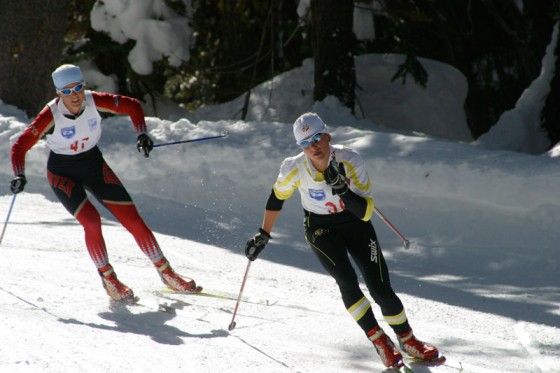
The following article was first published on FasterSkier in June 2009. It is reprinted now in advance of the upcoming announcement of athlete nominations for the 2022/2023 U.S. Ski Team, a subject of perennial interest for American ski fans. Based on the published objective criteria for team naming and athletes’ current world ranking, it appears that multiple athletes who are current or recent NCAA skiers will be named to next year’s national team.
Like many archival stories shared over the past few months, this article is simultaneously both dated and timeless. On the one hand, it discusses then-current college athletes Matt Gelso and Alexa Turzian, both of whom graduated from college in the early 2010s and have been retired from pro skiing for years; this was a long time ago. On the other hand, the article was written by an obscure FasterSkier reporter named Nat Herz, and the third collegiate athlete it discusses is one Rosie Brennan. Brennan said that she “felt that the USST had not given her enough time to fulfill her potential” as a college athlete, Herz wrote in 2009.
Well over a decade later, Herz was of course interviewing Brennan in Zhangjiakou at the 2022 Winter Olympics, Brennan’s second Games as an athlete and Herz’s third as a reporter. As famed nordic ski analyst William Faulkner once wrote, “The past is never dead. It’s not even past.”
At the Beijing Games, Herz wrote an article on Brennan’s career path entitled, “Rosie Brennan won’t take home medals from Beijing. She still helped change U.S. cross-country skiing.”
As Herz noted in the recent Brennan article, surveying some of this history, “At the start of Brennan’s career, the U.S. Ski Team was pushing athletes, hard, to skip conventional four-year college and commit full-time to skiing for the American program. [Jessie] Diggins, 30, did that. Brennan went to Dartmouth University and raced on the collegiate circuit When she started at school, she was also supported by the U.S. Ski Team. But then, after her sophomore year, she was cut.”
Contrasting this with the present day, Herz wrote, “the U.S. coaches now concede that the cold shoulder they gave to collegiate athletes was the wrong approach. At the Beijing Games, more than half of the American team finished or is enrolled in a traditional college program.” (This does not include athletes skiing for and taking classes at Alaska Pacific University; APU does not have an NCAA-affiliated ski team.)
Herz quoted 2022 Matt Whitcomb on these dynamics: “Being social in college, and being a kid a little bit, for a little bit longer, is what we now understand helps us get longer careers. You could almost look at Jessie Diggins as an anomaly.”
The simple takeaway, after reading these two articles against each other, is roughly, “The U.S. Ski Team opinion has changed; college is now recognized as having an important place in longterm athlete development; NCAA skiing is now a good avenue for many U.S. skiers.”
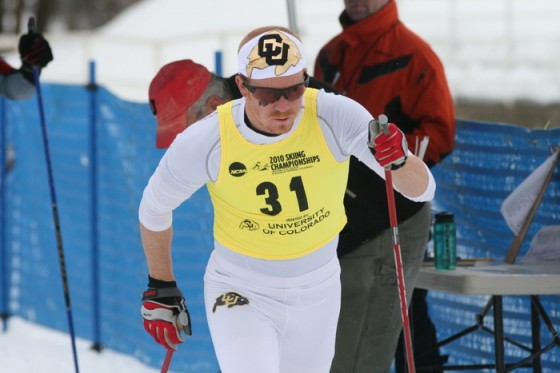
There’s correlation and then there’s causation, and while this article is not making bold claims about either, this newer line of thinking does prompt reflection on the ski-career trajectories of past NCAA champions. Keep in mind, the American development system, the staffing, coach education, and training philosophies of NCAA programs, and the ability of NCAA athletes to race both collegiate and international race circuits, etc., have all evolved over the last decade, along with the thinking of the U.S. Ski Team. There are also a myriad of reasons why an athlete may step away from sport before achieving top results. There’s no control group, and a lot of confounding variables in considering this (very small) data set.
That said, here’s a quick look back at American athletes who won an individual NCAA championship in the first two decades of this century: Chris Cook, Glenn Randall, Matt Gelso, Sam Tarling, Reid Pletcher, Miles Havlick, Paddy Caldwell, and Ian Torchia, for the men; Lindsey Williams, Lindsey Weier, Amy Glen, Joanne Firesteel Reid, Anika Miller, and Katharine Ogden, for the women.
To paint in broad strokes, you could reasonably conclude that, historically speaking, winning NCAAs as a young American skier has generally not been associated with longterm World Cup–level success, with Cook, Reid (biathlon), and Katharine Ogden being exceptions that disprove the rule.
But if you shift your focus from 2000–2019 to 2020–2022 and consider American NCAA champions over just the last three years – Ben Ogden (x3), Sydney Palmer-Leger (x2), Sophia Laukli, and Novie McCabe, all of whom save Palmer-Leger raced in Beijing and already have multiple World Cup top-30s – you may conclude that this is another area that is now changing. NCAA skiing could have a very different status in this country another 13 years from now.
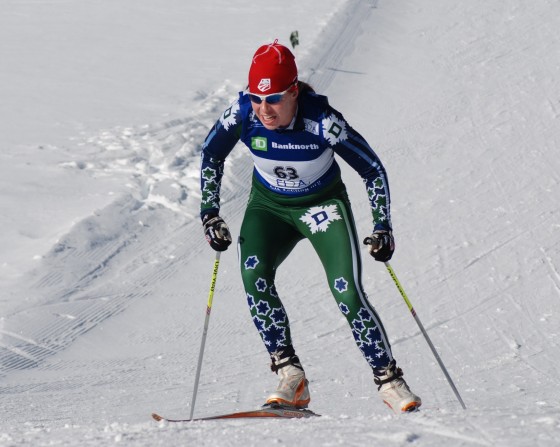
Performance, not college, was reason for USST cuts
Nat Herz, June 24, 2009
In the middle of May, the U.S. Ski Team (USST) dropped seven of the 18 skiers that were on the team. Three of those seven skiers are currently attending college: Matt Gelso and Alexa Turzian at Colorado University (CU), and Rosie Brennan at Dartmouth.
Following those skiers’ dismissals, the USST released a new set of recommendations that called for elite high school skiers to take time off to train before starting college. That announcement spawned abundant discussion on this web site and within the cross-country community, centered on the role of college programs in the development of the nation’s best skiers. Over the last few weeks, FasterSkier spoke with the dismissed collegiate skiers, as well as the staff of the USST, about how these decisions were made, and about collegiate skiing in general.
According to USST staff, these three skiers — and the other four that were dismissed from the team—were not dropped because they were attending college, per se. Instead, they were dropped due to a simple lack of improvement, and a lack of integration into an international-caliber development pipeline.
According to the athletes, the sacrifices they make to participate in a college skiing program are more than offset by the other benefits that their schools have to offer: financial support, opportunities for intellectual development, and—with a social life—a distraction and respite from the rigors of a full-time program. And, some still argue, it can provide a platform for international success.
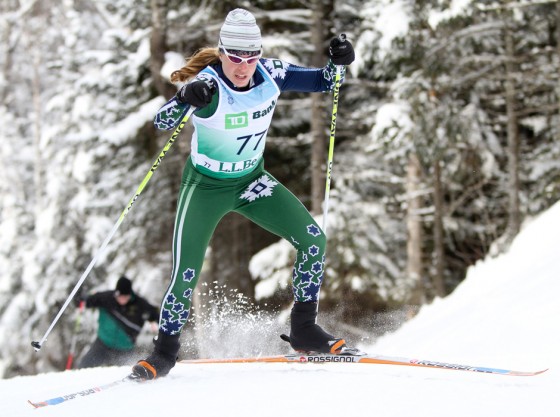
Toward International Success
According to USST Head Coach Pete Vordenberg, for the nation’s best high school skiers, the college route just hasn’t worked as it is currently structured.
In an e-mail to FasterSkier, Vordenberg wrote that most young American skiers start out behind their international counterparts in terms of fitness. In order to catch up, these athletes need the highest possible level of training and racing—at “the closest level to the best that we can design and carry out,” he wrote.
The closest level to the best, Vordenberg continued, means year-round training on an individually-designed plan; closely monitored and coached training and recovery; and racing as much as possible at the highest level.
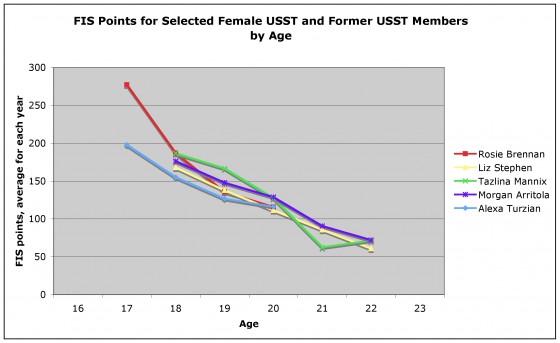
Potentially, Vordenberg wrote, college programs could provide this level of training and development necessary for international success, but that recently, this has not been the case.
“Can a college program provide [the type of support] described above? I don’t see why not,” he wrote. “Can college programs bring skiers toward international success? Again, why not? Have the skiers we have had on the USST and on NCAA teams progressed at the same rate as our non-college athletes? No. And this is where the discussions started.”
“We have had college skiers on the USST for many years, and over the past three years there was a concerted effort to build stronger partnerships with college teams by being sure to work with college skiers and post-collegiate skiers who showed promise and commitment,” Vordenberg wrote. However, he continued, “the way this partnership was working has not been good enough for the athletes.”
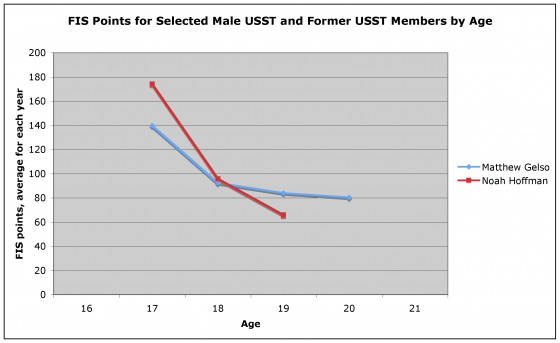
However, Vordenberg added, the three college skiers were not cut specifically because they were in school.
“This was not college driven,” he wrote. “This was performance and pathway driven…We cut athletes whose results were not showing that they were on track to international success.”
College’s Draw
According to the three collegiate skiers dropped from the USST, there were other considerations in their decisions to attend school aside from support for skiing. First, there’s economics. According to Gelso, CU offers him a scholarship, as well as financial support for training and racing.
“On top of…paying for all the trips and training, if you’re on a scholarship you have tuition and books, which is huge,” he said. Referring to his decision to attend and remain in college, he said that he thought he was “a little too economic, but I was thinking, ‘this huge package of benefits and funding—I don’t want to let that go.”
Then, there’s the academic stimulation that academics provide, which Gelso and Turzian said helps them to function better as skiers.
“I kind of need that second thing—I go crazy with just training and I get overloaded with it,” Turzian said. “I think maybe later in life, right before the [2014] Olympics, definitely I’m going to put my full focus into skiing, but really, [college] keeps a good balance. When I was skiing my best in my senior year of high school, I was still playing soccer and taking AP classes.”
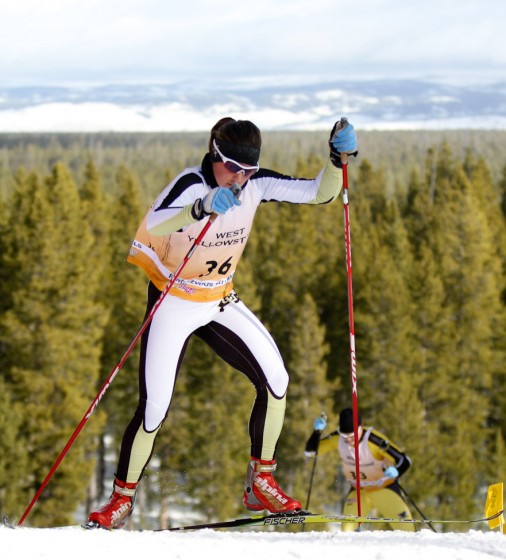
Finally, Gelso said, college provides a social scene.
“I know what training camp is like—it’s mind numbing,” he said. “I think time is better spent going training in the morning, going to class, training in the afternoon, hanging out with some friends later—I think school provides a good balance.”
The collegiate skiers interviewed by FasterSkier acknowledged that attending college resulted in moderate limitations on their training and racing, but they also said that they did not feel they were sacrificing their potential for international success.
Gelso said that while college skiers can only feasibly train about 600 hours a year, simply opting to attend school did not necessarily limit your potential.
“I think racing at NCAAs and getting the experience at college—I don’t think that limits your ability to ski fast,” he said. “I think some of the college races have better FIS points than a lot of the SuperTours. They’re competitive races, and they’re every weekend.”
Brennan said that having experienced college, she would still have made the same decision to go to school rather than ski full-time.
“The opportunities in terms of training that I have at Dartmouth are much better than I could have gotten anywhere else,” she said. “I have a great coach, and great teammates.”
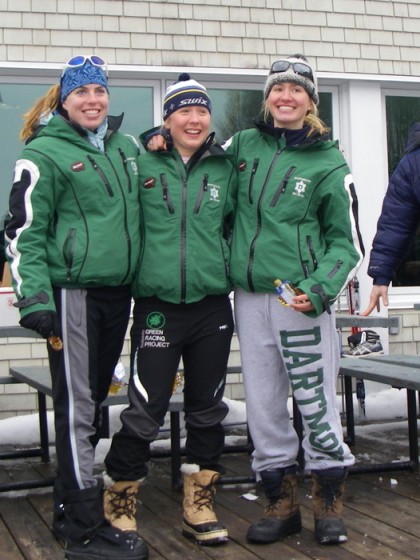
Brennan added that she probably would be able to do more hours if she were training full-time, but that she had still been able to increase her training load every year that she’d been at Dartmouth. She also said that she felt that the USST had not given her enough time to fulfill her potential.
“It was my understanding…that Alexa [Turzian] and I were guinea pigs at that point, to see if we could make this work,” she said. “To really make that a good test project we would need to complete college, so I felt kind of short-handed in that regard…Freshman year of college is a little iffy; I’m only a sophomore, so I felt like I didn’t have enough time to see if it was going to work.”
With regard to Brennan and Turzian’s situation, Vordenberg wrote that the USST has a policy to not discuss team issues publicly, but he did write that “the general guideline for being on the team is two years minimum.”
“We try to look closely at the athletes all the way along the way and make changes and adjustments,” he continued. “But at some point, even with injury, we have to say ‘look, something isn’t working here.’ And if something isn’t working, we have to make a change.”
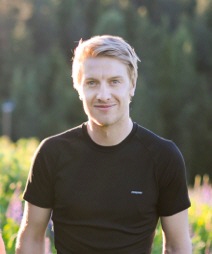
According to Kevin Cutts, who attends Northern Michigan University, colleges can train skiers at an internationally competitive level—it just depends on the commitment of the coaches and the skiers.
One of the problems, he said, is that “half the coaches at these programs don’t know what the hell they’re doing.”
Cutts said that he knew of a number of programs where coaches did little more than drive vans, or import European skiers who already have been training and racing at a high level and require little actual coaching. At NMU, he said, both of his coaches have masters’ degrees in exercise physiology, and their system has produced four skiers in the past few years that have been on the USST.
“College skiers just need to get more education about training,” he said. “They need to realize how hard they actually have to train, and define for themselves whether they’re going to commit to this.”
College, Cutts said, is the closest thing the United States will ever have to a club system.
“Our culture isn’t going to support the actual regional club system like they have in Europe, because our focus is on major, mass media sports like football and basketball,” he said. The problem right now, he said, is “a lack of communication between the college programs and the USST. If they decided they wanted to work together more, you’d see a lot more progress.”
Other Paths
One thing that the dropped athletes said they had realized was that the USST was not the only path to international success.
“My ultimate goal is just to make the Olympics,” Turzian said, “and I now realize that it’s not a part of the USST.”
Brennan said that while she also thought there were other pathways to success, “sometimes, you’re fighting a political battle as well, if you’re not on the [USST].”
According to Farra, the Nordic program director for USSA, qualification for the Olympics and World Championships is based on objective criteria, and “anybody can make that.”
However, for those who are not members of the USST, coming up with the funding to train and race can be difficult.
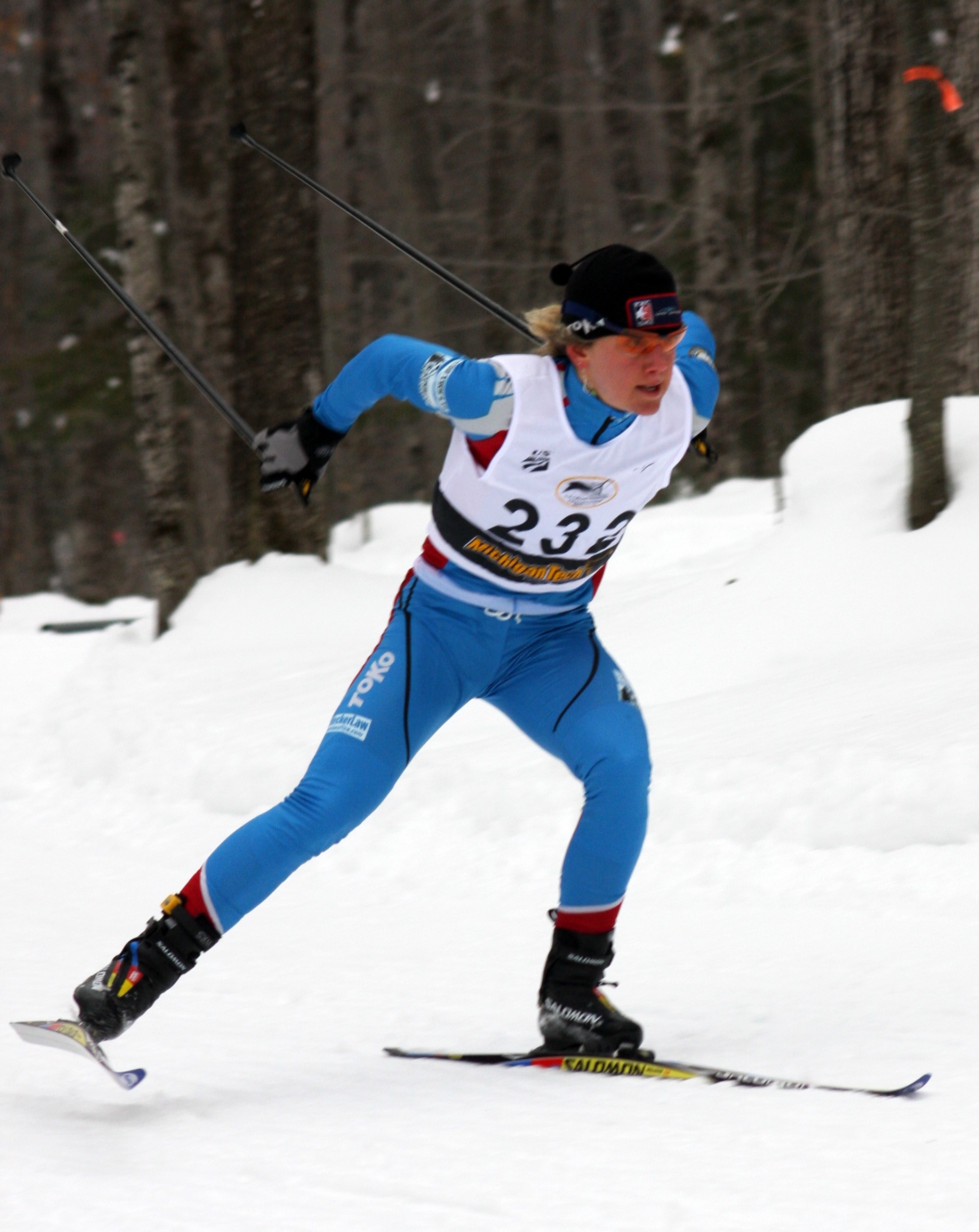
Caitlin Compton, who attended NMU and was passed over by the USST, has managed to ski full-time for the last four years, but said that she sometimes struggles supporting her training and racing.
“The door is wide open—they say that and they mean that,” she said, referring to qualification for international competition. “The one thing that does become tricky is that without the national team title…you do miss the opportunities sometimes.”
Compton said that while she was able to attend the recent USST camp in Bend, she had missed out on other training camps, trips to New Zealand, and funding.
“You get these opportunities, but you only get one shot, or you get a very small window,” she said. “If you want to be on the international circuit on an ongoing basis, you have to nail those big races.”
Farra said that for the USST and USSA, with their limited resources, “it’s about looking at our imperative: our job is to medal at the Olympics in 2014.”
“How we’re going to do that with limited money is by investing in people we believe are going to be the ones that are going to get it done with us,” he said. “If we had more money, we’d widen the scope.”
Related reading & listening:
Rosie Brennan won’t take home medals from Beijing. She still helped change U.S. cross-country skiing. (Fasterskier, February 2022)
Ben Ogden: Balancing Olympic and NCAA Skiing Ambitions Alongside a New Wave of Top US Skiers (Fasterskier, April 2022)
Nordic Nation: Transitioning to the World Cup with Ben Ogden, JC Schoonmaker, and Gus Schumacher
The comments on the original version of this article (June 2009): scroll to the bottom, click on the WordPress icon (![]() ) to load the comments, and read down. Featuring thoughtful perspectives from Marty Hall, Chad Salmela, Ben Husaby, Morgan Arritola, Eric Strabel, Adam St. Pierre, and several other recognizable names in American skiing.
) to load the comments, and read down. Featuring thoughtful perspectives from Marty Hall, Chad Salmela, Ben Husaby, Morgan Arritola, Eric Strabel, Adam St. Pierre, and several other recognizable names in American skiing.
USST Nominates 11 for 2010 Season, Focus is on International Success (FasterSkier, May 2009)
Team Nominations 2010, Controversial Topic (statement by Pete Vordenberg, May 2009)
Gavin Kentch
Gavin Kentch wrote for FasterSkier from 2016–2022. He has a cat named Marit.



